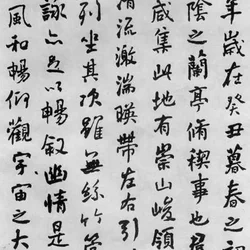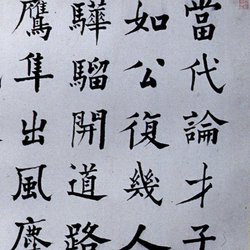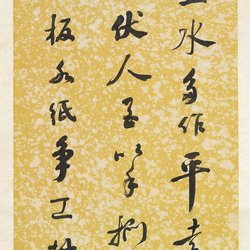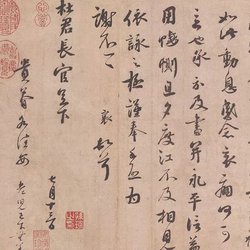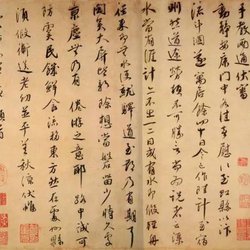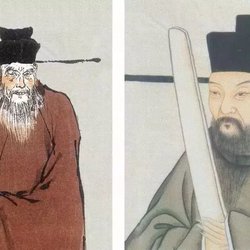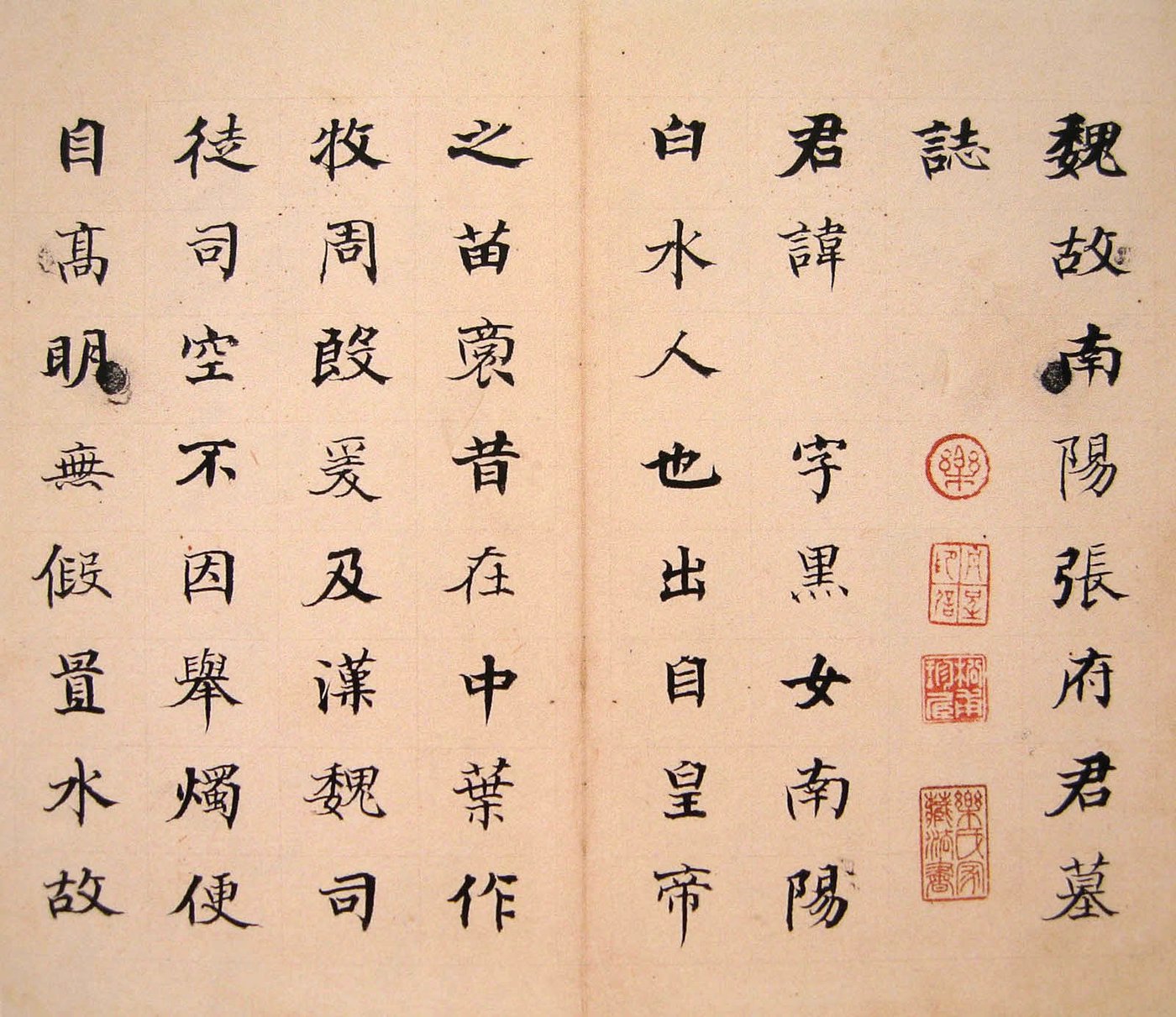
He Shaoji, "Lin Zhang Hei Nu's Epitaph" pages (select one), paper, 23×27cm×7
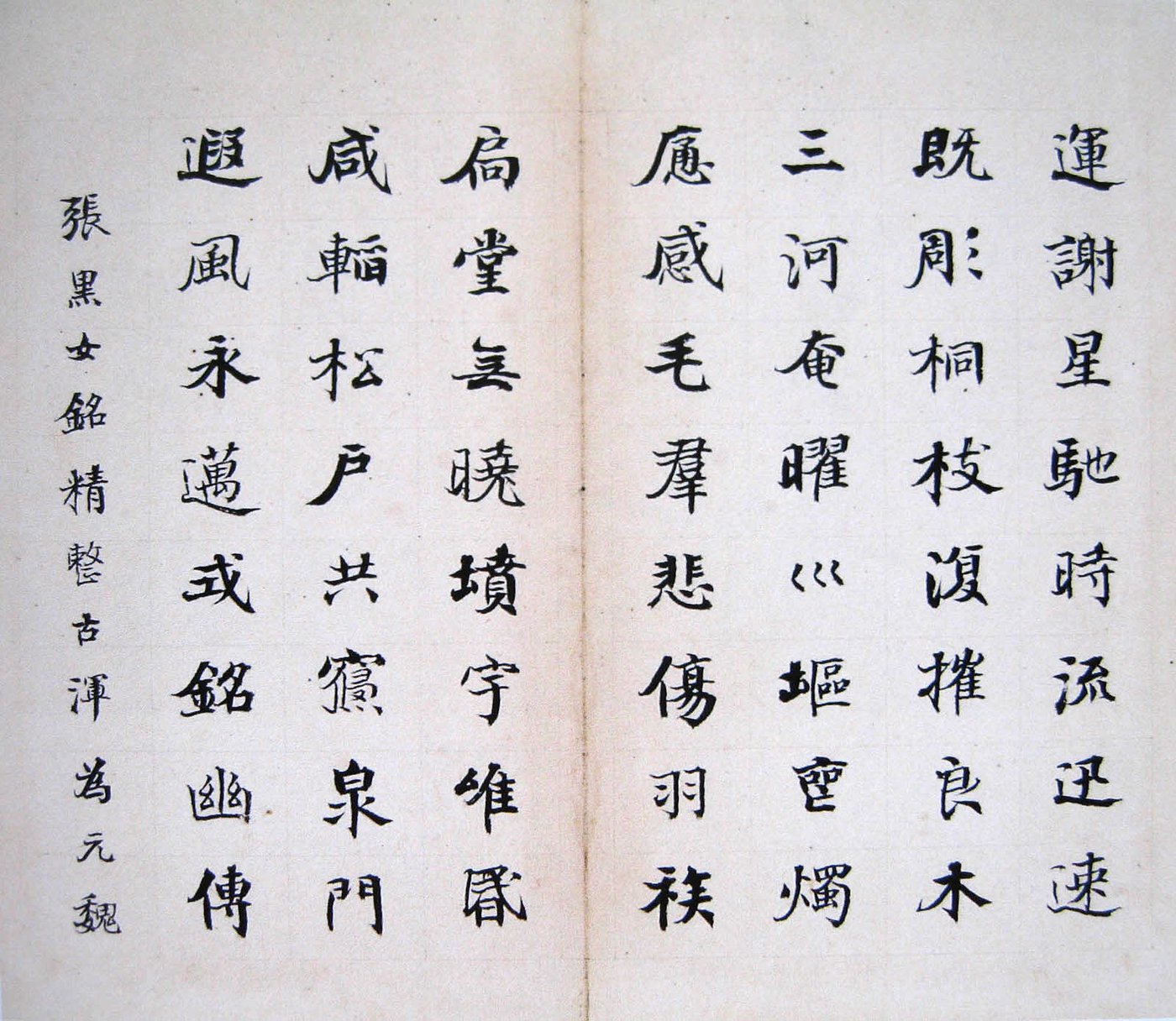
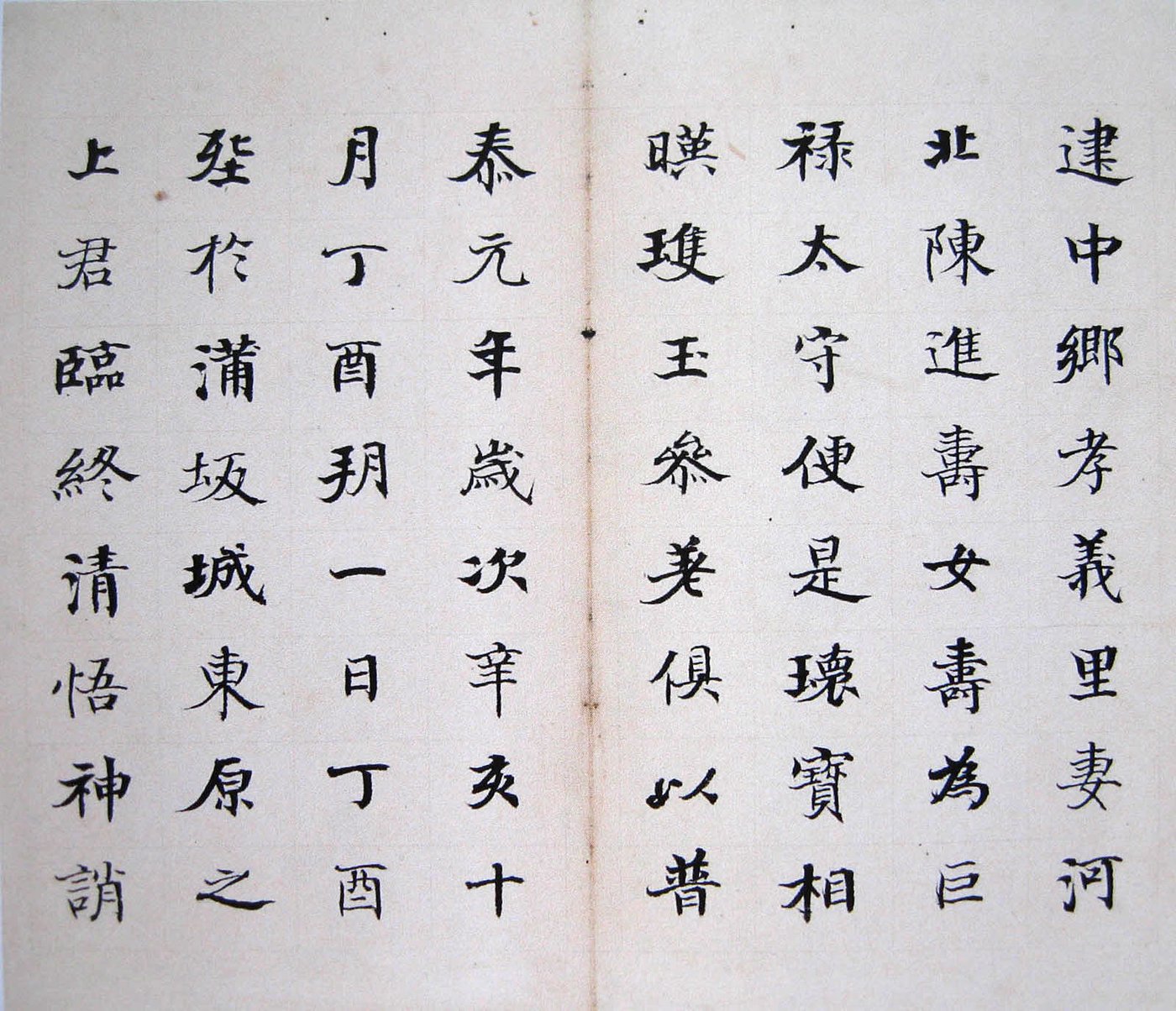
The rubbing of "Zhang Heinv's Epitaph" is the only one handed down from generation to generation. The inscription is in a beautiful font and was once collected by He Shaoji and now belongs to the Shanghai Museum. He loved this inscription and stayed close to it day and night, as detailed in the postscript. When He came to this inscription, he attacked from all sides, and the words were powerful and beautiful, and he achieved the samadhi of the inscription.
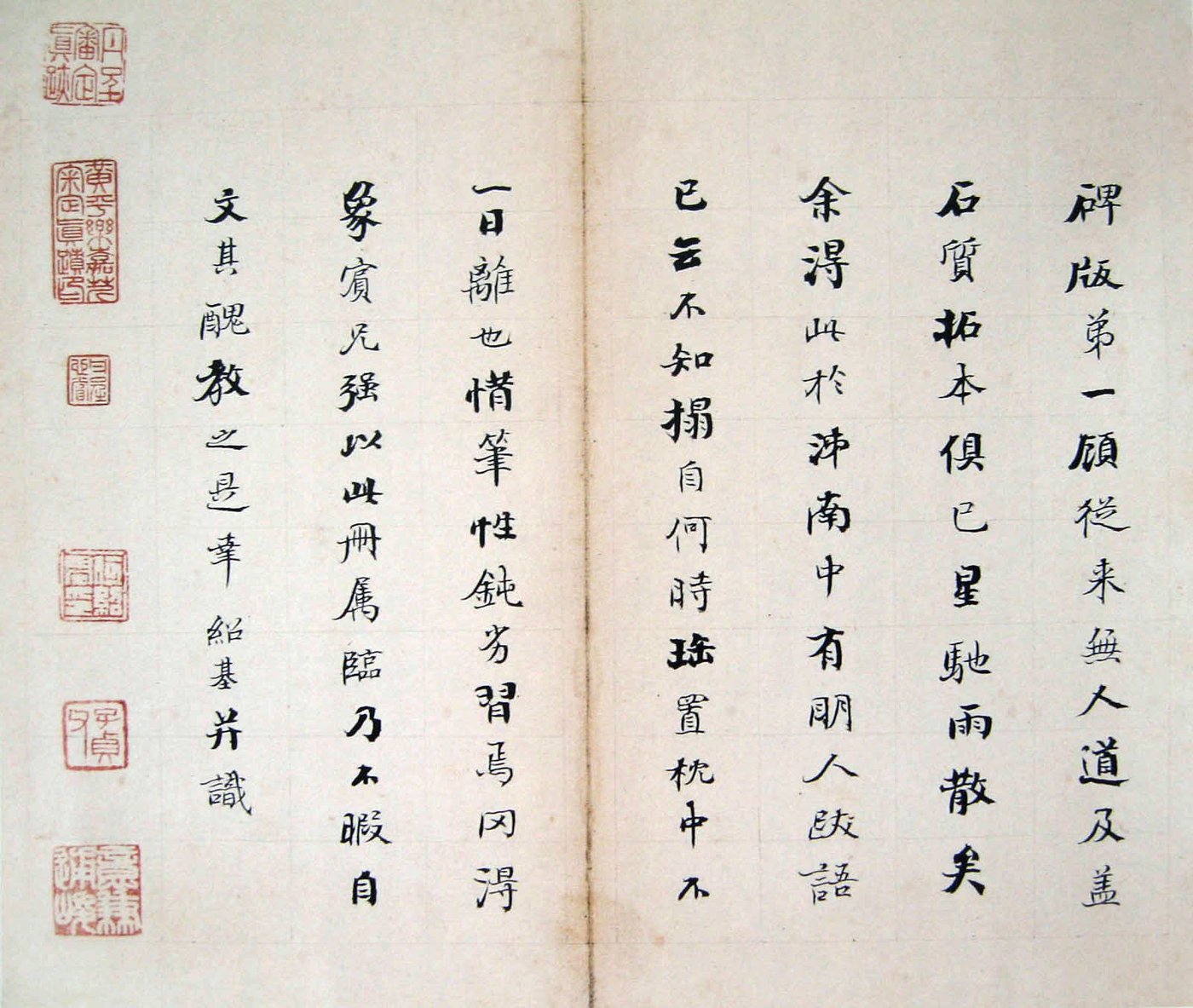
"Epitaph of Zhang Heinv", the full name is "Epitaph of Zhang Xuan, the late governor of Nanyang in Wei Dynasty", also known as "Epitaph of Zhang Xuan". The inscription is steep, simple and lush, and the structure is flat and square. Although it is in regular script, it has the meaning of official script. The original stone has been lost for a long time. In 1825, He Shaoji found an old rubbing of this epitaph. It had twelve pages, each page had four lines, and was full of eight characters. It was the only copy handed down from generation to generation. He was overjoyed. He claimed that after getting this rubbing, he "swiveled around the sea to Dengzhou, and then to Chu." In the following year, Bingxu entered the capital, Dinghai visited Bian, returned to the capital Xuanchu, Wuzi returned to the capital in the winter, and traveled more than 20,000 miles back and forth. I was not in the boat every day, sitting in the shop outside the boat window, sitting quietly and admiring, and gained a lot. ”, also known as “Yu is fond of northern steles, so he imitates them very diligently, and he also buys and collects them richly. There are those who are comparable to "Black Girl". Every time they write, they have to turn their wrists high and use all their strength to complete the words. It is less than half of them, and they are sweating under their clothes."
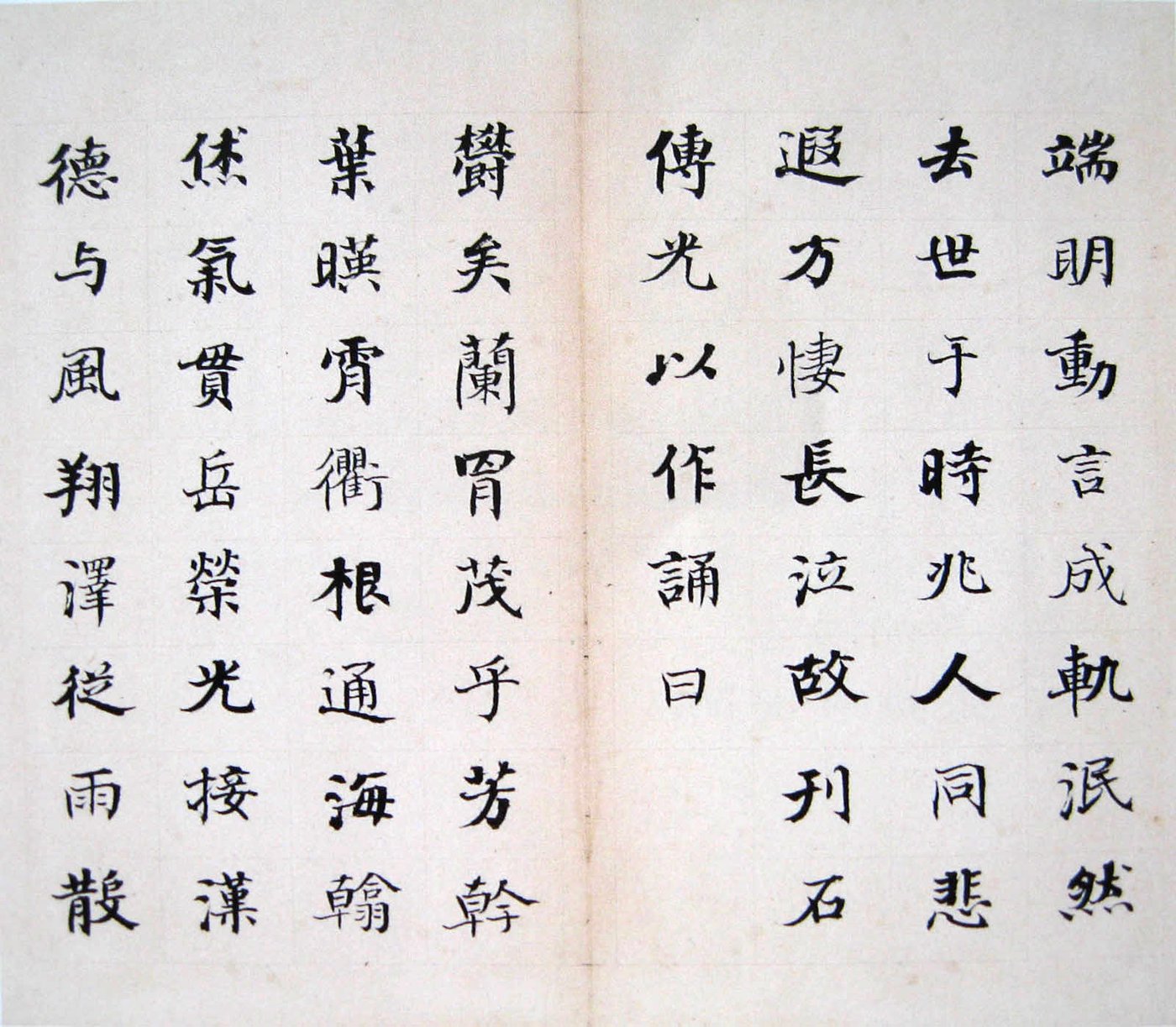
[Explanation]: Qi from the tomb of Zhang Fujun, Nanyang, the deceased of the Wei Dynasty... (abbreviation of the text) The wind is everlasting, the style inscription is passed down; Zhang Heinv's inscription is refined and ancient, and it is the first brother of the Yuan and Wei steles. I have never thought about it, but the stone cover and rubbings have all been scattered by the stars. I found this in Henan, and there was a postscript from a friend in it, saying that I don't know when I came from there. Place it on your pillow and never leave it for a day. It's a pity that the writing skills are dull and inferior, but I can't get used to it. Brother Xiang Bin forced this book to come to me, but he had no time to criticize his own ugliness. It was a blessing to teach him that Shao Ji knew him.

